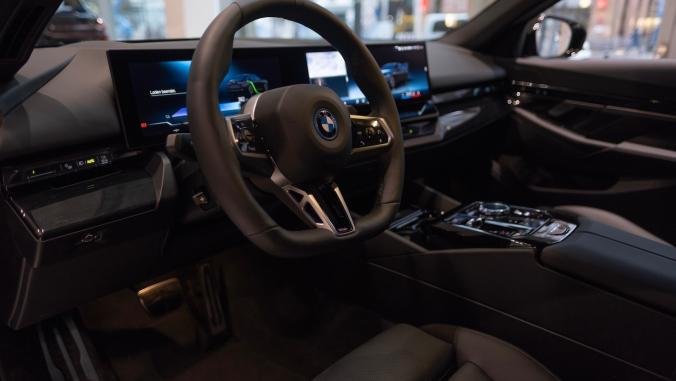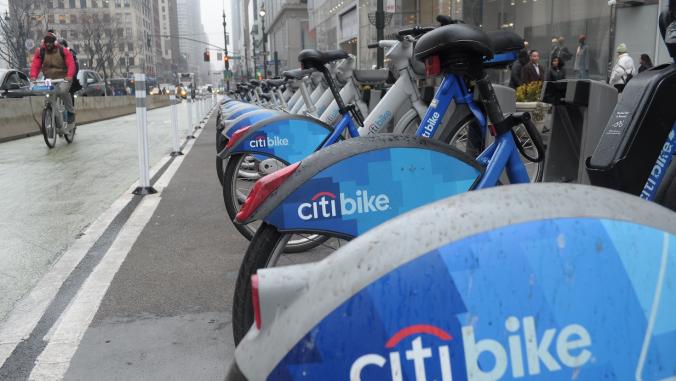Happy National Drive Electric Week, happening from Sept. 23 to Oct 2. This nationwide movement celebrates electric mobility, and there is a lot to be excited about. It feels like companies and governments make a slew of announcements every day relating to EVs. Here is a snippet from just one week ago, Tuesday, Sept. 20:
- Hertz set to buy 175,000 GM EVs through 2027;
- Chinese automaker Changan Automobile launches new $26,000 EV;
- GM and EDF team up to develop seven new recommendations for the next round of EPA standards for vehicle model years 2027-plus; and
- Kia announces it will produce EVs in the U.S. in 2024 to ensure drivers can obtain the new federal EV tax credit.
These announcements are exciting. However, as I always love to say, announcements are one thing, and acting on them in a meaningful and impactful way is wholly separate. With all the news circulating around Patagonia’s founder Yvon Chouinard giving away his wealth to fight the good fight on climate, I recently found myself watching his interview with GreenBiz chairman and co-founder Joel Makower at GreenBiz 2013 where this concept of "less talk and more walk" was perfectly laid out:
"I had an employee at one of these conferences, and it was a bunch of Fortune 500 companies, and they were all talking about what they are doing for sustainability, and it sounded all great. But my friend asked, ‘Why is the world going to hell still, where, every month, the indicators show that we are losing this planet? Why is that?’ Somebody then answered, ‘The elephant in the room is growth.’"
This story applies perfectly to the EV charging industry, where growth is the name of the game. As the EV driver pool grows and incredible amounts of federal, state and utility dollars continue to become available, EV charging companies compete for market share and dominance to have their charging hardware and software in every feasible parking lot.
Company competition and growth are great qualities of a capitalistic economy as the consumer often wins with better services and products. However, it’s all a double-edged sword, because there is only so much capitalistic hunger this planet can endure. Continue watching Chouinard’s talk for more on that.
So, how does this apply to the EV charging industry?
Well, for the longest time, growth (that is, installing more charging stations) has mattered more than EV charging reliability and maintenance. At least that is how it appears with the state of the public EV charging stations today, what with all the news stories regarding broken or unusable stations. Sidenote: California may help change that narrative with the signing of the "EV Charging Reliability Transparency Act," which will develop uptime recordkeeping and reporting standards for EV charging stations.
But what I find increasingly interesting is that the constant pressure on EV charging companies and governments to perform better and offer more reliable service is typically from the perspective of everyday consumers and less so from companies and fleets.
Now, I’m not so much speaking about EV charging companies offering fleet charging services at company depots and facilities (there are some great success stories on that). Instead, I am speaking more about the equivalent of public DC fast-charging stations, but for fleets. When I spoke with Siemens and Iron Mountain a few months back, they indicated that their fleets do not rely on public charging networks for myriad reasons, one being unreliability. But that approach cannot continue forever as EV fleet adoption grows, especially for more long-haul heavy-duty vehicles driving coast-to-coast.
Only a few companies are exclusively operating in this space of offering dedicated fleet charging, and they have big funds behind them to support their grand endeavors. Voltera Power is one that just launched with a multibillion-dollar investment from EQT Infrastructure to build, own and operate high-power charging facilities for company fleets. Even more recently, though, TeraWatt Infrastructure is back in the news for securing over $1 billion in funding to scale commercial EV charging centers across the U.S. for light-, medium- and heavy-duty vehicles. While neither has an active operation of chargers, their promise of a future for fleet charging is captivating.
Diving deeper with Neha Palmer, CEO, TeraWatt Infrastructure
I caught up with Palmer to get some of her thoughts on the future of EV fleet charging. "We are providing a full stack solution for fleets looking for EV charging — meaning the location, interconnect (which is complex and expensive), all the on-site infrastructure and then we operate the site after it’s up and running," she said.
Palmer’s team is developing its first list of locations, and it has the funds to do it, but at what scale? One billion dollars is an incredible amount of money. However, in the EV charging space, especially for high-power charging infrastructure for heavy-duty vehicles, that is just a drop in the bucket. The ICCT just released a new study finding that, under an accelerated ZEV transition pathway, the U.S. will have a projected 1 million heavy-duty EVs on its roads in 2030 (the study classifies any vehicle above 3.5 ton gross vehicle weight as heavy-duty). That equates to needing 570,000 chargers to help keep these vehicles moving. BloombergNEF also expects a cumulative investment of $360 billion globally by 2030 and more than $1 trillion by 2040 to meet the needs of the EV fleets. Furthermore, some reports show that for 350 kW DC fast charging infrastructure, what most company fleets will want, the costs per station to install are upwards of $140,000.
Whether the U.S. will achieve that many EVs by 2030, the magnitude of providing adequate charging infrastructure is no easy task. But that isn’t stopping Palmer and her team, which is exciting. "We will work in a metro with a passenger vehicle fleet, and we will work in a warehouse hub or along the open highway with larger scale vehicles," Palmer said. "The expertise we bring is finding those locations and then setting them up for charging."
But will companies such as TeraWatt Infrastructure learn from the struggles of public network EV charging companies when it comes to focusing more on operations and maintenance? When asked about this, Palmer placed more of her trust in the EV charging industry growing up, from which improved service and reliability would follow. "There are a couple of drivers that will help bring this [improving EV charging reliability], and hardware is getting better," Palmer said. "This is still not a very developed space, and there are a lot of different chargers out there, but it’s really very nascent, and we’re seeing that the quality and reliability is starting to go up just by the nature of the industry’s maturity."
While TeraWatt Infrastructure isn’t planning to build its own EV charging hardware, it is focused on only working with partners that can deliver the highest level of quality when it comes to EV charging reliability and integrating software. Palmer is also optimistic that greater pressure on quality service by company fleets will push EV charging hardware providers to improve reliability more than what's seen in the public consumer EV charging space. "When you have a fleet, you have a lot more knowledge about what’s going on at any individual site, and you have to because it is critical infrastructure for the fleet," Palmer said. "So I think the industry focus will start to go towards higher levels of reliability in general."
Only time will tell how well fleet-charging companies such as TeraWatt Infrastructure perform and if they can in fact ensure better service and reliability when it comes to EV charging. However, in the end, companies such as Palmer's are beholden to their charging hardware and software providers, just as consumers have been with public EV charging stations and their reliability, and look where we are with that.






